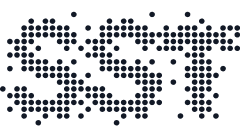CLINICIAN WELL-BEING
Tackling Healthcare Burnout with AI: Turning Data into Systemic Change
Discover how to tackle healthcare burnout at scale by identifying key patterns, uncovering systemic contributors, and driving lasting cultural and operational change.
Jul 23, 2025
Surgical Safety Technologies
Healthcare burnout is no longer an individual issue—it is a system-wide emergency. Hospitals across the globe continue to face critical staffing shortages, rising operational demands, and workforce disengagement. These pressures strain clinicians, compromise care delivery, and elevate risk. Yet most burnout interventions remain reactive, fragmented, and disconnected from the broader operational environment.
To address healthcare burnout at scale, hospital leaders need to identify patterns, uncover system-level contributors, and drive sustainable cultural and procedural change.
The Scope of Healthcare Burnout
Physician burnout¹ is a central part of a broader trend, with nurses and surgical teams also reporting significant levels of emotional exhaustion and depersonalization. The American Medical Association² reported that in a 2023 study, 45.2% of physicians reported at least one symptom of provider burnout.³ Furthermore, physicians are 82% more likely to experience burnout than those working in non-medical fields.
Nurse burnout⁴ is just as critical. According to a 2023 National Council of State Boards of Nursing report,⁵ over 100,000 nurses left the workforce in the last two years due to burnout and stress.
This exodus puts additional pressure on those who remain. Staff shortages increase patient loads, extend hours, and decrease access to peer support. The result is a negative feedback loop that reinforces burnout, reduces quality of care, and diminishes retention.
Hospital leaders must move beyond resilience training and adopt systems-based strategies to prevent burnout in healthcare.⁶ The solution lies not just in asking hospital leadership to do more to support their teams—but in designing environments that do less harm.
Data-Driven Interventions That Reduce Healthcare Burnout
AI tools are most effective when used to support targeted, measurable interventions. Consider these examples of how AI-powered data can drive systemic change to reduce burnout:
Focused Documentation Support: Ambient scribes are being widely implemented by health systems to reduce burnout for providers. One study⁷ found that AI is reducing note taking by 20% and after-hours work by 30%. These technologies can reduce the burden on providers and free up time to focus on patient care.
Optimizing the Surgical Workflow:⁸ Health systems are increasingly implementing tools like Room State™ that leverage AI and predictive insights to optimize block utilization and on-time case starts, effectively reducing overtime, turnover time, and idle time. These tools give staff better visibility into their schedules and improve both staff and patient satisfaction.
Psychological Safety Auditing: AI can assess how often staff speak up, raise concerns, or ask questions. These markers correlate with team trust and psychological safety. Interventions such as facilitated feedback sessions or peer-led forums can improve openness and reduce emotional strain.
Clinical Review Programs: Monthly reviews of safety events and team performance, fed by objective AI data, reinforce a just culture and reduce stress. These interventions allow staff to learn without fear of blame, and shift hospitals from reactive firefighting to proactive prevention.
Reframing Healthcare Burnout as a Systemic Indicator
Burnout is not just a workforce issue—it is a clinical performance signal. When burnout rates are high, patient safety is at risk. Studies have repeatedly linked burnout with increased medical errors⁹ and lower patient satisfaction.¹⁰ Addressing healthcare burnout should be part of every hospital’s quality and safety strategy.
AI provides the mechanism to connect human experience with operational data. When clinicians feel seen, supported, and heard—and when their insights are grounded in data—organizations can shift from reactive coping to proactive transformation.
Leveraging the Black Box Platform™ to Address Healthcare Burnout
Modern clinical intelligence technology like the Black Box Platform are enabling hospitals to facilitate honest reflection of care delivery and drive systemic improvement. Inspired by aviation black boxes, the platform de-identifies facial images and voices to provide psychological safety in healthcare¹¹ and highlights best practices as well as areas of opportunity. It’s a powerful tool for driving excellence - not assigning blame.
These insights are foundational for systemic change. Rather than attributing burnout to individual failure, the Black Box Platform reveals structural contributors—such as workflow inefficiencies, communication gaps, and procedural inconsistencies. Surgeons, nurses, and administrators can use this data to improve team dynamics, optimize protocols, and create safer work environments.
Hospitals using the platform have already seen reductions in intraoperative distractions, improved adherence to safety checklists,¹² and increased opportunities for peer-to-peer coaching. These changes support a culture of learning and reflection, which is essential for reducing healthcare burnout over time.
The Leadership Mandate to Address Healthcare Burnout
Hospital executives are uniquely positioned to lead this change. Investing in AI-enabled platforms is not a technology decision alone—it is a commitment to workforce well-being, patient safety, and institutional resilience.
The return on investment is clear. Lower medical burnout¹³ correlates with lower turnover, fewer safety events, and stronger team cohesion. Hospitals that adopt AI-powered clinical intelligence not only improve outcomes but also build cultures of trust, transparency, and excellence.
By embracing solutions like the Black Box Platform, leaders can finally move beyond temporary fixes and address the systemic conditions that fuel burnout.
See how the Black Box Platform can help your hospital turn data into action—and build a safer, stronger clinical culture. Book a demonstration.
Recommended Reading
Surgical Safety Technologies. (2025, September 3). Physician Burnout and the OR Bottleneck: How Improving Surgical Scheduling Can Boost Capacity and Morale [blog post]. https://www.surgicalsafety.com/blog/physician-burnout
American Medical Association. (2025). National physician burnout survey. https://www.ama-assn.org/practice-management/physician-health/national-physician-burnout-survey
Surgical Safety Technologies. (2025, May 22). 3 Cultural Shifts to Prevent Provider Burnout in the OR [blog post]. https://www.surgicalsafety.com/blog/3-cultural-shifts-to-prevent-provider-burnout-in-the-or
Surgical Safety Technologies. (2025, June 10). Nurse Burnout is Fueling a System-Wide Crisis in Healthcare [blog post]. https://www.surgicalsafety.com/blog/nurse-burnout-is-fueling-a-system-wide-crisis-in-healthcare
NCSBN. (2023, April 13). NCSBN Research Projects Significant Nursing Workforce Shortages and Crisis [press release]. https://www.ncsbn.org/news/ncsbn-research-projects-significant-nursing-workforce-shortages-and-crisis
Surgical Safety Technologies. (2025, June 2). Preventing Burnout in Healthcare: An Imperative for Systemic Change [blog post]. https://www.surgicalsafety.com/blog/preventing-burnout-in-healthcare
Duggan, M.J., Gervase, J., Schoenbaum, A., et., al. (2025). Clinician Experiences With Ambient Scribe Technology to Assist With Documentation Burden and Efficiency. JAMA Netw Open;8;(2), e2460637. https://jamanetwork.com/journals/jamanetworkopen/fullarticle/2830383
Surgical Safety Technologies. (2025, November 19). Optimize the Surgical Workflow with AI-Powered Insights [blog post]. https://www.surgicalsafety.com/blog/optimizing-the-surgical-workflow-with-artificial-intelligence
UPenn LDI. (2023, July 27). High Rates of Clinical Burnout and Patient Safety Issues at Even the Best Hospitals [press release]. https://ldi.upenn.edu/our-work/research-updates/high-rates-of-clinical-burnout-and-patient-safety-issues-at-even-the-best-hospitals
Li, Z.L., Yang, P., Singer, S.J., et., al. (2024). Nurse Burnout and Patient Safety, Satisfaction, and Quality of Care: A Systemic Review and Meta-Analysis. JAMA Netw Open;7(11), e2443059. https://pubmed.ncbi.nlm.nih.gov/39499515/
Surgical Safety Technologies. (2025, May 8). Psychological Safety in Healthcare Drives High-Performance Teams - and AI Should Support It [blog post]. https://www.surgicalsafety.com/blog/psychological-safety-in-healthcare-ai-should-support-it
Al Abbas, A.I., Meier, J., Daniel, W., et., al. (2024). Impact of team performance on the surgical safety checklist on patient outcomes: an operating room black box analysis. Surgical Endoscopy;38(10), 5613-5622. https://www.surgicalsafety.com/clinical-research/team-performance-surgical-safety-checklist-patient-outcomes
Surgical Safety Technologies. (2025, July 2). Unraveling the Cycle of Medical Burnout [blog post]. https://www.surgicalsafety.com/blog/medical-burnout-unraveling-the-cycle







